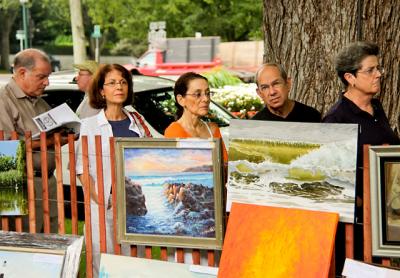Clothesline Sale Returns to East Hampton
Clothesline Sale Returns to East Hampton

As proof that an old dog can master new tricks, Guild Hall’s annual Clothesline Art Sale, first held in 1946, has added two new features this year.
In addition to the main sale of hundreds of original artworks priced from $75 to $2,200, a Makers Market, which will feature functional art such as jewelry, purses, and hand knits that were previously excluded from the sale, will be held in Guild Hall’s garden.
Admission is free to both sales, which will take place Saturday from 9 a.m. to 4 p.m. The sidewalk sale will be held rain or shine, but inclement weather will move the Makers Market indoors to the Boots Lamb Education Center.
For those who want to beat the crowds and have the first opportunity to buy the offerings in the galleries, a preview cocktail party will be held tomorrow evening from 5 to 7. Tickets are $100, $75 for members, and wine and hors d’oeuvres will be served.
Sales of artworks are split evenly between the artist and Guild Hall, whose programs are supported by the event.

